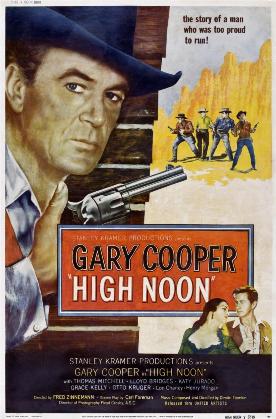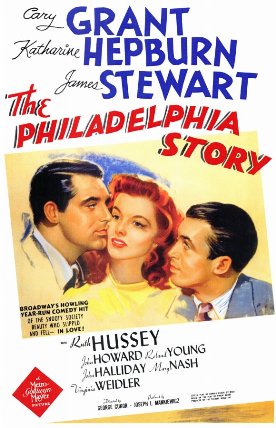Dancer in the Dark
The wildly over-rated Dancer in the Dark by Lars von Trier (Breaking the Waves) seems to me simply the most silly and pretentious load of tripe that I have seen in many a long day. So silly is it that, but for remembering a similar but less obtrusive kind of silliness to be found in Breaking the Waves, I could hardly help thinking I must be missing something. Even now I ask myself: must not a film-maker as intelligent as Von Trier have intended the film to be this silly? But to what end? To notice, as one can hardly help doing, that the movie has a political subtext designed to criticize the United States in a recognizably Scandanavian fashion for continuing to execute murderers when the highly civilized Danes have long since ceased to do so is only to put the same question back a space: must not a film-maker as intelligent as Von Trier have seen the inadequacy of such a simple moral reflex (it never rises to the level of a thought) to sustain a film of the scope and ambition of this one?
Well, it’s all too many for me. Certainly there are other signs that the melodramatic, almost cartoonish mise en scène is intended to strike us exactly as it does. Von Trier has outdone even himself, in Breaking the Waves, in creating another saint-criminal, another self-annihilating heroine who is destroyed by this tough old world, so that we are meant to come away with an impotent grudge against the world that is a mere reminiscence, a kind of nostalgic backward glance, at Marxian-style politics. As if to reinforce its political angle, he makes Selma Jesskova, who is played by the pixieish Icelandic pop singer, Björk, a refugee from Czech communism living in rural America in (roughly) 1960 who still believes that “Communism is better for human beings” Yeah, right. But von Trier has never been the man to balk at implausibilities. Here, for instance, is a brief outline of the plot of this extraordinary film.
Selma is suffering from a degenerative eye disease that she knows will destroy her sight completely in a short time. The mother of a small son, Gene (Vladica Kostic), who has inherited the genetic predisposition to this illness from her—we never hear anything about Gene’s father—she is determined to save enough money for an operation that will correct the genetic defect in Gene that it is too late to correct in herself. She does this by working in a tool and die plant on a stamping machine which she can hardly see—thus endangering both herself and her employers’ machinery—and, in her spare time, sticking pins into cards for sale in notions shops. She spends nothing on herself and saves every penny in an old candy tin she keeps hidden in the ironing board cupboard in the decrepit trailer she and Gene rent from Bill (David Morse), the local sheriff, and his spendthrift wife, Linda (Cara Seymour).
Bill is well-known as the recipient of an inheritance which allows him to live better than he otherwise would be able to do on a policeman’s salary. Soon he confides in Selma, however, that Linda’s spending is out of control. Not only is all the inheritance spent, but he is now unable to meet the mortgage payments on his house. He is afraid that Linda will no longer love him if he is broke and cannot bring himself to tell her. Instead he asks Selma to lend him something from her store “just for a month”—until he can get back on his feet again. Selma says no. That’s Gene’s money, and she cannot lend it. But Selma has also confided in him the secret of her blindness, which is now complete, so Bill is able to see where she hides her money and, when she is at work, steals it from her. When Selma confronts him about the theft, Bill invites her to kill him and offers no resistance when she obligingly does so.
Because Von Trier has very politely asked critics not to reveal the ending, I shall respect his wishes, but, trust me, subsequent events do not become any more plausible. At one level, the absurdity of the plot line is meant to echo, perhaps, the frequent digressions into musical fantasy which are all that make Little Selma’s oppression by the machinery of capitalism and the capitalist state supportable to her. Behind the obvious political moral is an equally obvious, if less controversial, artistic one. For the film is among other things a tribute to the classic Hollywood musical—like Selma’s eyesight, fading to darkness with the dawn of the 1960s—and what used to be called its “escapist” charm. Selma’s ability to transport herself into a musical of the mind when things get bad for her, a place where, as in Hollywood musicals themselves, “nothing dreadful ever happens,” makes the dreadfulness of her own plight all the more poignant.
Yet even here Von Trier has made a dreadful mistake, in my view, for even a musical illiterate is able to spot that Selma’s mental musicals are nothing like the real thing. The music (composed by Miss Björk herself) has none of the jazzy, brassy, upbeat quality, or the sentimental sweetness of its Broadway or Hollywood prototypes. The dirgelike untunefulness of her Icelandic blues could hardly tempt anyone in search of escape. In the music as in the plot, Von Trier seems to be relying on a kind of postmodern suspension of disbelief: posit one melodramatic plot, details unimportant, and posit the music to go with it which you may take as both (a) expressive of the emotional temperature of the unhappy tale and (b) representative of the happy music that is the one solace of the heroine’s miserable life. I guess it works in theory.
It is curious, finally, that Von Trier makes Selma the victim of a disease which is said to be “a family thing” and yet gives her no family, apart from Gene—who completely fades out of the picture after putting in a brief appearance at the beginning. Of course, neither Gene’s nor her own fatherlessness would excite remark today, but it seems curious 40 years ago. Who is she? How did she get from Czechoslovakia to this rough and remote patch of backwoods America? Perhaps his giving her a family infirmity without the family is meant to stand as a kind of analogue of her peculiar sort of Trierian, self-immolating heroism. Certainly, it is easier to portray our natural and human ties to our fellow creatures as merely limiting and oppressive—if not fatal!—when they are kept firmly off-screen.
For like all the social ties Selma seeks to slip free of in finally entering her ideal musical world (significantly, her imaginary “father” in the film is a washed-up Czech musical star played by Joel Grey), like reality itself, family only brings unhappiness here. But as her blindness is enlightened by hallucination, even the grimmest of realities proves no match for Selma’s powers of fantasy. All the trappings of her poverty and unhappiness, from the machinery in the factory to the scratching on the pads of the courtroom reporters during her trial for murder, are transmuted in her mind into music and dance. When her would-be boyfriend, Jeff (Peter Stormare) realizes that she is blind, she bravely tells him: “What is there to see?” It’s not surprising that someone with heroic powers of fantasy and a case of Attention Deficit Disorder as advanced as hers would come to think that reality doesn’t matter compared with what goes on inside her head. But it does, as Von Trier at least ought to know.
Discover more from James Bowman
Subscribe to get the latest posts to your email.







